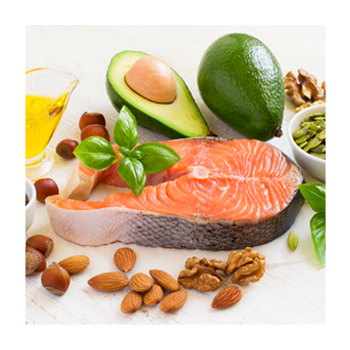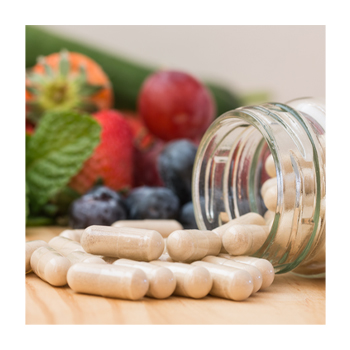


Sign-up for {N}power to get exclusive discounts, newsletters, members-only features, and more!

According to the American Lung Association’s “State of the Air 2022” report, the state of our air is… well, it’s not very good. Between 2018 and 2020, the U.S. had the highest number of “very unhealthy” and “hazardous” air quality days than it ever has in the 20 years the report has been published. It also found that more than 40 percent of Americans live in places with failing grades for unhealthy levels of particulate pollution or ozone, and that “People of color were 61% more likely than white people to live in a county with a failing grade for at least one pollutant, and 3.6 times as likely to live in a county with failing grades for all three pollutants [measured].”1

Pollution levels in many areas of the United States exceed national air quality standards for at least one of several common pollutants, including fine particulate matter, ground-level ozone, sulfur dioxide, nitrogen dioxide, and lead.2 These pollutants carry with them a number of health risks beyond lung disease. Some of the health issues associated with exposure to air pollution, especially long term, include stroke, high blood pressure, and heart disease; dementia, Alzheimer’s, depression, impaired cognition, and mental health issues in children; increased risk of miscarriage and premature birth; reduction in bone mineral density; kidney disease; and a reduction in life expectancy.3 4
Fine particulate matter, commonly found in smoke (an ever-increasing problem with the recent increase in wildfires) and emissions from power plants and vehicles, is of particular concern for health because it can penetrate body tissues and organs, “posing an even greater risk of systemic health impacts.”5 This fine particulate matter has been implicated in cardiovascular disease, lung disease, and neurodegeneration and dementia.6 7 8 9 10
Avoiding exposure to air pollution—especially ambient, or outdoor, pollution—may feel out of our control, but we can control how well-equipped our bodies are to handle the inevitable exposure. Here’s how to protect yourself.
 Much of the damage wrought by air pollution is through its ability to increase oxidative damage and inflammation in our bodies. The omega-3 fats EPA and DHA are well-known to have anti-inflammatory effects and new research is showing that they have the potential to mitigate the harmful effects of air pollution, including fine particulate matter. A 2020 study published in the journal Neurology examined the effects of omega-3 fat consumption on brain size in 1,315 dementia-free women between the ages of 65 and 80. Researchers found that exposure to particulate matter from air pollution reduced brain size, but these effects were mitigated in the women who had higher blood levels and dietary intakes of EPA and DHA. The women with higher blood levels and dietary intakes of the omega-3s had “significantly greater volumes of white matter and hippocampus.”11 The hippocampus is the part of the brain involved in the formation of memories, learning, and emotions.
Much of the damage wrought by air pollution is through its ability to increase oxidative damage and inflammation in our bodies. The omega-3 fats EPA and DHA are well-known to have anti-inflammatory effects and new research is showing that they have the potential to mitigate the harmful effects of air pollution, including fine particulate matter. A 2020 study published in the journal Neurology examined the effects of omega-3 fat consumption on brain size in 1,315 dementia-free women between the ages of 65 and 80. Researchers found that exposure to particulate matter from air pollution reduced brain size, but these effects were mitigated in the women who had higher blood levels and dietary intakes of EPA and DHA. The women with higher blood levels and dietary intakes of the omega-3s had “significantly greater volumes of white matter and hippocampus.”11 The hippocampus is the part of the brain involved in the formation of memories, learning, and emotions.
Another recent study compared the effects of dietary omega-3 and omega-6 fat intake on asthma severity in 135 asthmatic children exposed to indoor air pollution in Baltimore City; the majority of the subjects were African Americans between the ages of five and 12. The researchers analyzed the amount of omega-3 and omega-6 fats the children obtained from their diets and then measured the amount of air pollution and particulate matter each child was exposed to in their homes. The researchers found that high omega-6 intake (commonly found in soy, corn, and cottonseed oils and prevalent in fast food and other highly processed foods) amplified the effects of indoor particulate matter, particularly systemic inflammation, and was associated with increased asthma severity and reduced lung function. However, in the children with higher omega-3 fat intakes, the negative effects of particulate matter exposure were diminished and asthma symptoms were reduced.12
Previous research has also found that the omega-3s reduce oxidative damage caused by fine particulate matter in part by significantly increasing the activity of the body’s internal antioxidant system.13 The most effective way to increase your levels of the omega-3s is to take 2-3 grams of a high-quality fish oil daily.
 The B vitamins folate, B6, and B12 have been shown to reduce the effects of fine particulate matter on the cardiovascular system, particularly in those with an “MTHFR” gene variation, who are also at a higher risk of developing cardiovascular disease. Research has found that a higher intake of these B vitamins prevents the negative effect exposure to fine particulate matter has on heart rate variability (HRV); exposure to fine particulate matter decreases HRV, which is associated with increased cardiovascular disease and death.14
The B vitamins folate, B6, and B12 have been shown to reduce the effects of fine particulate matter on the cardiovascular system, particularly in those with an “MTHFR” gene variation, who are also at a higher risk of developing cardiovascular disease. Research has found that a higher intake of these B vitamins prevents the negative effect exposure to fine particulate matter has on heart rate variability (HRV); exposure to fine particulate matter decreases HRV, which is associated with increased cardiovascular disease and death.14
Additionally, a 2017 study published in the Proceedings of the National Academy of Sciences reported that folic acid, B6, and B12 could prevent the negative effects fine particulate matter has on DNA, mitochondrial energy metabolism, and methylation. In simple terms, methylation is a biochemical process in which “methyl groups” are added to DNA or proteins to help them function correctly. Healthy methylation is essential to overall health, and these B vitamins are critical to that process. In this study, researchers found that exposure to fine particulate matter induced negative methylation changes in genes involved in mitochondrial energy production. Supplementation with the B vitamins prevented these changes and also protected mitochondrial DNA.15 A high-quality B complex supplement will ensure that you are getting adequate amounts of all of the B vitamins; look for one that includes the methylated forms of folate and B12.
 Because air pollution increases oxidative damage in our bodies, it is of utmost importance to arm your body with plenty of antioxidant nutrients. Vitamins C and E are two of the best, and are especially important when it comes to protecting the lungs. Both of these antioxidants are found in the lungs and have long been studied for their protective effects against air pollution. When exposed to different types of air pollution including ozone, fine particulate matter, and nitrogen dioxide, the lung’s natural antioxidant defenses are depleted, making it critical to replenish them. Vitamins C and E enhance the activity of the lungs’ internal antioxidant defenses, restoring antioxidant levels back to normal and effectively decreasing oxidative damage. Further, a number of studies show that supplementation with C and E protects normal lung function in children and adults, with and without asthma, when exposed to both acute and long-term air pollution. Aim for at least 500 mg of vitamin C and 400 mg of vitamin E daily.
Because air pollution increases oxidative damage in our bodies, it is of utmost importance to arm your body with plenty of antioxidant nutrients. Vitamins C and E are two of the best, and are especially important when it comes to protecting the lungs. Both of these antioxidants are found in the lungs and have long been studied for their protective effects against air pollution. When exposed to different types of air pollution including ozone, fine particulate matter, and nitrogen dioxide, the lung’s natural antioxidant defenses are depleted, making it critical to replenish them. Vitamins C and E enhance the activity of the lungs’ internal antioxidant defenses, restoring antioxidant levels back to normal and effectively decreasing oxidative damage. Further, a number of studies show that supplementation with C and E protects normal lung function in children and adults, with and without asthma, when exposed to both acute and long-term air pollution. Aim for at least 500 mg of vitamin C and 400 mg of vitamin E daily.
 EPA and DHA, the B vitamins, and the antioxidant vitamins C and E are wonderful foundational nutrients that support whole-body health in addition to protecting your body from air pollution. There are also certain phytonutrients that are proving to have a powerful protective effect. Broccoli sprouts are a concentrated source of sulforaphane, a potent inducer of the body’s detoxification enzymes. Research has found that regular consumption helps the body detoxify airborne pollutants.20 While broccoli sprouts are one of the most concentrated sources of this compound, other cruciferous veggies like broccoli, Brussels sprouts, kale, and cabbage also contain sulforaphane. Be sure to include plenty of cruciferous vegetables in your daily diet and consider supplementing with broccoli sprouts, which will ensure that you get optimal amounts of sulforaphane.
EPA and DHA, the B vitamins, and the antioxidant vitamins C and E are wonderful foundational nutrients that support whole-body health in addition to protecting your body from air pollution. There are also certain phytonutrients that are proving to have a powerful protective effect. Broccoli sprouts are a concentrated source of sulforaphane, a potent inducer of the body’s detoxification enzymes. Research has found that regular consumption helps the body detoxify airborne pollutants.20 While broccoli sprouts are one of the most concentrated sources of this compound, other cruciferous veggies like broccoli, Brussels sprouts, kale, and cabbage also contain sulforaphane. Be sure to include plenty of cruciferous vegetables in your daily diet and consider supplementing with broccoli sprouts, which will ensure that you get optimal amounts of sulforaphane.
Human lung and bronchial cell studies have found that the polyphenol antioxidant resveratrol, commonly found in grape skins, reduces oxidative damage and inflammation caused by air pollutants, including diesel exhaust particles and nickel.21 22 Quercetin, a flavonoid antioxidant found in onions and apples, was shown to attenuate the oxidative and inflammatory damage in the offspring of pregnant mice exposed to fine particulate matter; the mothers were protected as well. The researchers wrote, “Taking a proper dose of quercetin as dietary supplements during pregnancy may have beneficial effects on health.”23 Exposure to particulate matter during pregnancy is known to be harmful to fetal development and children’s long-term health.
 Exposure to air pollution—particularly to fine particulate matter—is one of the biggest environmental health risks in the U.S. Exposure, especially long term, can lead to a myriad of health problems by increasing inflammation and oxidative damage throughout our bodies. The best way we can protect ourselves is to arm our bodies with plenty of antioxidant and anti-inflammatory support. A nutrient-dense diet full of antioxidant-rich vegetables and anti-inflammatory fats goes a long way in supporting general health, including protecting against environmental assaults like air pollution. Amp up the protection with supplements that have a proven track record and you’ll be able to confidently breathe in the air, polluted or not.
Exposure to air pollution—particularly to fine particulate matter—is one of the biggest environmental health risks in the U.S. Exposure, especially long term, can lead to a myriad of health problems by increasing inflammation and oxidative damage throughout our bodies. The best way we can protect ourselves is to arm our bodies with plenty of antioxidant and anti-inflammatory support. A nutrient-dense diet full of antioxidant-rich vegetables and anti-inflammatory fats goes a long way in supporting general health, including protecting against environmental assaults like air pollution. Amp up the protection with supplements that have a proven track record and you’ll be able to confidently breathe in the air, polluted or not.



Sign-up for {N}power to get exclusive discounts, newsletters, members-only features, and more!